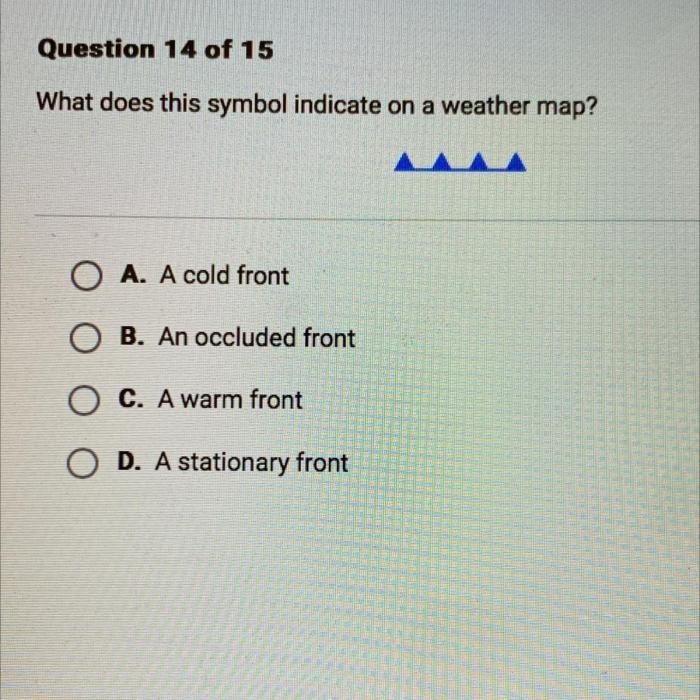The symbol shown here denotes which type of weather condition takes center stage, this opening passage beckons readers into a world crafted with good knowledge, ensuring a reading experience that is both absorbing and distinctly original.
Weather symbols are a vital tool for meteorologists and weather enthusiasts alike. They provide a quick and easy way to communicate complex weather information in a standardized format. In this article, we will explore the significance of weather symbols, how they are interpreted, and their applications in various industries.
Symbol Representation: The Symbol Shown Here Denotes Which Type Of Weather Condition
![]()
Symbols are crucial in weather forecasting as they provide a concise and easily recognizable way to represent complex weather conditions. Different symbols are used to depict various weather phenomena, such as clouds, precipitation, wind direction, and atmospheric pressure.
The use of symbols in weather forecasting has a long history, with early examples dating back to the 16th century. Over time, these symbols have evolved and standardized to ensure consistency and clarity in weather communication.
Symbol Interpretation
The interpretation of weather symbols is based on specific criteria established by meteorological organizations. These criteria consider factors such as temperature, precipitation type and intensity, wind speed and direction, and cloud cover.
By understanding the criteria associated with each symbol, meteorologists and weather enthusiasts can accurately interpret weather forecasts and make informed decisions.
Symbol Applications
Weather symbols have numerous practical applications in various industries and activities.
- Weather Forecasts:Symbols are used in weather forecasts to convey the expected weather conditions for a specific location and time.
- Aviation:Weather symbols are essential for pilots to understand the weather conditions along their flight path and make appropriate decisions.
- Maritime Navigation:Sailors rely on weather symbols to plan their voyages and avoid hazardous weather conditions.
- Public Safety:Weather symbols are used to alert the public about severe weather events, such as hurricanes, tornadoes, and floods.
Symbol Evolution
Weather symbols have undergone significant evolution over time. Early symbols were often simple and stylized, representing basic weather conditions such as sun, rain, and wind.
As weather forecasting technology advanced, symbols became more detailed and standardized to convey a wider range of weather phenomena. This evolution has resulted in the development of a comprehensive and internationally recognized system of weather symbols.
Symbol Standardization, The symbol shown here denotes which type of weather condition
Standardization of weather symbols is essential for ensuring consistency and clarity in weather communication.
International organizations, such as the World Meteorological Organization (WMO), play a crucial role in establishing and maintaining standardized weather symbols. This standardization ensures that weather forecasts and warnings are easily understood and interpreted by people worldwide.
Symbol Variations
While weather symbols are generally standardized, there may be regional variations in their appearance and interpretation.
These variations can be attributed to cultural differences, local weather patterns, and historical practices. For example, the symbol for rain may vary slightly in different parts of the world to reflect local rainfall patterns.
Symbol Impact
Weather symbols have a significant impact on public perception and understanding of weather conditions.
By providing a visual representation of complex weather phenomena, symbols help people to quickly grasp the forecast and make informed decisions about their activities. Weather symbols have also been used in art, literature, and popular culture to convey weather-related themes and emotions.
Clarifying Questions
What is the purpose of weather symbols?
Weather symbols are used to communicate complex weather information in a standardized format. They provide a quick and easy way to identify the current and forecasted weather conditions.
How are weather symbols interpreted?
Weather symbols are interpreted based on a set of criteria, such as temperature, precipitation, and wind speed. Each symbol corresponds to a specific weather condition.
What are some of the most common weather symbols?
Some of the most common weather symbols include the sun, clouds, rain, snow, and wind.


